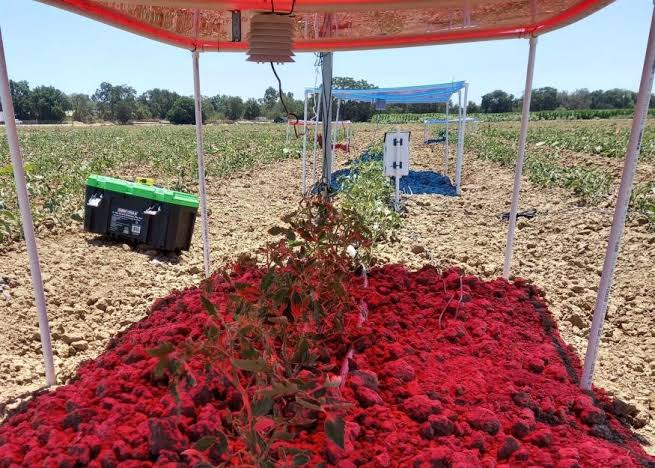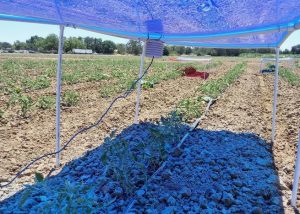A more effective way has been found by researchers to grow crops naturally under solar panels. Translucent solar cells helps to split the light spectrum and enables a more productive use of arable land.
Researchers may call it agrivoltaic. The process of growing crops underneath solar panels. According to the researchers, red wavelengths are more efficient for growing plants. Whereas, the blue part of the spectrum is better for producing solar energy.
Moreover, solar panels allow red wavelengths to pass through and help in growing food more productively while generating power at the same time.
Previous studies have shown that due to agrivoltaics shielding crops from direct sunlight they use less water comparatively.
In 2015, researchers at Michigan Technological University said that shading can reduce water usage by almost 29%.
Majdi Abou Najm, associate professor at University of California Davis department of land, water and air resources notified that by splitting the light spectrum, crops can get a good amount of carbon dioxide with less water.
“Today’s solar panels take all the light and try to make the best of it. But what if a new generation of photovoltaics could take the blue light for clean energy and pass the red light onto crops, where it is more efficient for Photosynthesis?”.
The idea came when researchers put the tomatoes under blue and red light filters and put the crops without any coverings.
Though, despite having about a third less yield than the control, the covered tomatoes were rotten twice as compared to uncovered.
Abou Najm noted that the filters helped to reduce crop wastage and heat stress.
From this research, it was clear that manufacturers need to develop translucent solar panels that capture blue light. On the other hand, also allow red light to pass through.
Matteo Camporeso, an associate professor at the University of Padova in Italy gave his opinion by saying that translucent carbon-based organic solar cells work in a better way to produce crops.
Moreover, it is also important to look into other factors such as fact wavelength-selective agrivoltaic systems. To harvest the crops in a productive way farmers might require to think extraordinary.
Though, the research seems promising and as with an increasing global population. It is very important to utilize new techniques and use natural resources more productively.
“We cannot feed 2 billion more people in 30 years by being just a little more water-effecient and continuing as we do “, said Abou Najm.
In addition, he also said that “we need something transformative, not incremental. If we treat the sun as a resource, we can work with shade and generate electricity while producing crops underneath. Kilowatt-hours become a secondary crop you can Harvest.
Read more:






 San Francisco Twitter Bird Sold For $100,000 In the Auction
San Francisco Twitter Bird Sold For $100,000 In the Auction